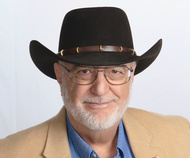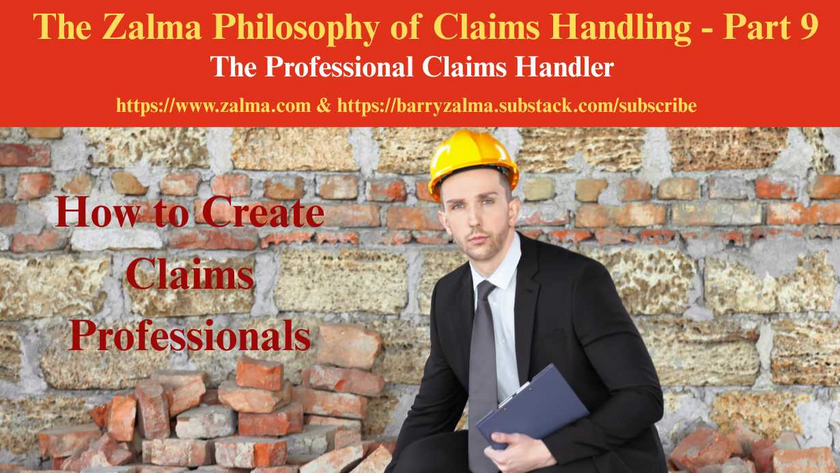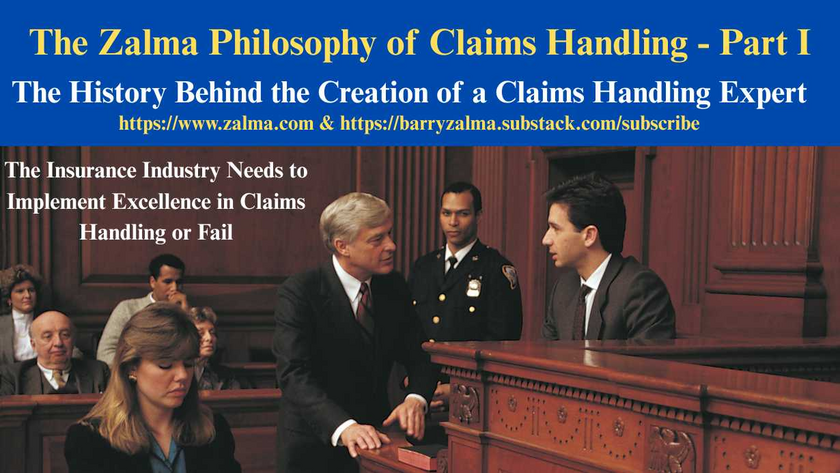
The Law of Unintended Consequences and The Tort of
Read the full article at https://lnkd.in/gFe2jYAk and see the full video at https://lnkd.in/gZKupNnu and at https://lnkd.in/gYX-tJQe and at https://zalma.com/blog plus more than 2450 posts.
See the full video at https://rumble.com/v173p1n-the-law-of-unintended-consequences-and-the-tort-of-bad-faith.html and at
In a typical contract, one party has a duty to perform (construct a building, deliver goods, convey real estate, pay indemnity) and the other party has a duty to pay money or perform a task. Breach by the performer may take the form of nonperformance, defective performance, or delay in performance. The primary purpose of damages for breach of a contract is to protect the promisee’s expectation interest in the promisor’s performance. Damages should put the plaintiff in as good a position as if the defendant had fully performed as required by the contract. Damages should never provide a profit to the non-breaching party.
Insurance, like all parts of modern society, is subject to the deprivations of the law of unintended consequences. In the USA alone people pay to insurers more than $1.2 trillion dollars in premiums and insurers pay out in claims as much or more than they take in. Profit margins are small because competition is fierce and a year’s profits can be lost to a single firestorm, earthquake, hurricane, flood or unexpected bad faith law suit.
Neither the courts nor the governmental agencies seem to be aware that in a modern, capitalistic society, a healthy and viable insurance is a necessity. No person would take the risk of starting a business, buying a home or driving a car without insurance. The risk of losing everything would be too great. By using insurance to spread the risk among all the costs of taking the risk to start a business, buy a home or drive a car becomes possible. The persons insured are dependent on their insurer to take the risk the insureds are not willing to take alone.
Insurance contracts can be simple or exceedingly complex, depending upon the risks taken by the insurer. Regardless, insurance is only a contract whose terms are agreed to by the parties to the contract.
What those quick to settle bad faith suits, most of the massive verdicts were reversed or reduced on appeal. The insurers who always acted in good faith were forced to raise their premiums to cover the payments to avoid bad faith suits. The bad actors also raised their premium, but not as much as the good faith insurers, and lost little business because their premiums were less. They continued to act in bad faith, paid less to insureds than their good faith competitors, and profited while those who treated their insureds in good faith, lost money.
The good faith insurers, faced with the massive verdicts, allowed fear to control reason and even paid claims that were improper or fraudulent. The extra cost was passed on to all insurance consumers, not just to the insurers who acted improperly. The bad actors continued their wrongful acts and only paid the few insureds that sued, after a long and contentious defense to the lawsuit.
Honest and professional insurers paid fraud perpetrators and claims the policy never intended to cover for fear of being accused as being the same as the bad actors. Those who exercised good faith were punished, and those who dealt with insureds in bad faith, profited.
The tort of bad faith, designed to help the innocent, resulted in punishing the honest and professional insurers, rewarding the insurers who acted in bad faith with profit. Also, because of the fear of punishment with bad faith suits, insurers allowed many frauds to succeed rather than face potential tort damages. Contract terms and conditions that were clear and unambiguous were ignored to avoid litigation.
In the more than 70 years of application across the United States, the tort of bad faith has not, in my opinion, had a salutary effect on the insurance business or the people and businesses who are insured. Insurance costs have increased more than is reasonable or necessary so that sufficient funds exist to pay claims and tort damages from those insureds who believe they were wronged.
Not all bad faith suits are certain winners. Not every bad faith suit results in a punitive damages award. In a first party claim in New Jersey brought by the insured against its own insurance company the appellate court conclude that to establish an insurer’s bad faith, the insured must demonstrate that coverage was so clear it was not fairly debatable. If there is a valid question of coverage, i.e., the claim is fairly debatable, the insurer bears no liability for bad faith. [Wacker-Ciocco v. Gov’t Emp. Ins. Co., 439 N.J. Super. 603, 611 (App. Div. 2015)]. Insurers in fear of a potential bad faith judgment, a plaintiff must show the lack of a reasonable basis for denying the claim or unreasonably delaying its processing, and the insurer’s knowledge or reckless disregard that it was acting unreasonably. [Parko Props., LLC v. Mercer Ins. Co. of N.J. (N.J. Super. App. Div. 2020)]
Unfortunately, few insurers are willing to take a chance on convincing a jury that the decision to deny the claim was fairly debatable or that the decision made was as a result of a genuine dispute. In Louisiana and Mississippi, for example, multiple millions were paid to settle claims that flood damage was covered as a result of Hurricane Katrina, although the policies excluded flood and the plaintiff insureds failed to buy flood insurance. Mudslides in Southern California from hills denuded by wildfires, clearly excluded, are being paid because of fear of claims of bad faith and an aggressive department of insurance that construes a mudslide as a loss due to fire.
(c) 2022 Barry Zalma & ClaimSchool, Inc.
Barry Zalma, Esq., CFE, now limits his practice to service as an insurance consultant specializing in insurance coverage, insurance claims handling, insurance bad faith and insurance fraud almost equally for insurers and policyholders. He practiced law in California for more than 44 years as an insurance coverage and claims handling lawyer and more than 54 years in the insurance business. He is available at http://www.zalma.com and [email protected].
Subscribe to Zalma on Insurance at locals.com https://zalmaoninsurance.local.com/subscribe.
Subscribe to Excellence in Claims Handling at https://barryzalma.substack.com/welcome.
Write to Mr. Zalma at [email protected]; http://www.zalma.com; http://zalma.com/blog; daily articles are published at https://zalma.substack.com.
Go to the podcast Zalma On Insurance at https://anchor.fm/barry-zalma; Follow Mr. Zalma on Twitter at https://twitter.com/bzalma; Go to Barry Zalma videos at Rumble.com at https://rumble.com/c/c-262921; Go to Barry Zalma on YouTube- https://www.youtube.com/channel/UCysiZklEtxZsSF9DfC0Expg; Go to the Insurance Claims Library – https://zalma.com/blog/insurance-claims-library/
Insurer’s Exclusion for Claims of Assault & Battery is Effective
Post 5250
Read the full article at https://lnkd.in/gBzt2vw9, see the video at https://lnkd.in/gEBBE-e6 and at https://lnkd.in/gk7EcVn9, and at https://zalma.com/blog plus more than 5250 posts.
Bar Fight With Security is an Excluded Assault & Battery
In The Cincinnati Specialty Underwriters Insurance Company v. Mainline Private Security, LLC, et al., Civil Action No. 24-3871, United States District Court, E.D. Pennsylvania (December 16, 2025) two violent attacks occurred in Philadelphia involving young men, Eric Pope (who died) and Rishabh Abhyankar (who suffered catastrophic injuries). Both incidents involved security guards provided by Mainline Private Security, LLC (“Mainline”) at local bars. The estates of the victims sued the attackers, the bars, and Mainline for negligence and assault/battery. The insurer exhausted a special limit and then denied defense or indemnity to Mainline Private Security.
INSURANCE COVERAGE
Mainline had purchased a commercial ...
Marine Insurer May Dispose of Vessel to Avoid Waste
Post 5249
Read the full article at https://lnkd.in/gfn_UHdp, see the video at https://lnkd.in/gDWVccnr and at https://lnkd.in/gv9nsBqk, and https://zalma.com/blog plus more than 5200 posts.
In Western World Insurance Company v. The Estate Of Shawn Arsenault, No. 25-cv-13413-PGL, United States District Court, D. Massachusetts (December 17, 2025) the USDC was asked to resolve a marine insurance dispute after the sinking of the F/V Seahorse, a commercial fishing vessel, off Cape Cod on June 8, 2025. The vessel’s owner and operator, Shawn Arsenault, died in the incident.
Western World Insurance Company issued a hull insurance policy for the vessel. With no personal representative yet appointed for the estate, the insurer cannot determine the proper payee for the insurance proceeds.
The insurer paid for the vessel’s recovery and removal, and the vessel is now with a salvage company, incurring substantial storage fees. The insurer determined the loss is covered under the ...
Marine Insurer May Dispose of Vessel to Avoid Waste
Post 5249
Read the full article at https://lnkd.in/gfn_UHdp, see the video at https://lnkd.in/gDWVccnr and at https://lnkd.in/gv9nsBqk, and https://zalma.com/blog plus more than 5200 posts.
In Western World Insurance Company v. The Estate Of Shawn Arsenault, No. 25-cv-13413-PGL, United States District Court, D. Massachusetts (December 17, 2025) the USDC was asked to resolve a marine insurance dispute after the sinking of the F/V Seahorse, a commercial fishing vessel, off Cape Cod on June 8, 2025. The vessel’s owner and operator, Shawn Arsenault, died in the incident.
Western World Insurance Company issued a hull insurance policy for the vessel. With no personal representative yet appointed for the estate, the insurer cannot determine the proper payee for the insurance proceeds.
The insurer paid for the vessel’s recovery and removal, and the vessel is now with a salvage company, incurring substantial storage fees. The insurer determined the loss is covered under the ...
Zalma’s Insurance Fraud Letter
Read the full article at https://lnkd.in/dG829BF6; see the video at https://lnkd.in/dyCggZMZ and at https://lnkd.in/d6a9QdDd.
ZIFL Volume 29, Issue 24
Subscribe to the e-mail Version of ZIFL, it’s Free! https://visitor.r20.constantcontact.com/manage/optin?v=001Gb86hroKqEYVdo-PWnMUkcitKvwMc3HNWiyrn6jw8ERzpnmgU_oNjTrm1U1YGZ7_ay4AZ7_mCLQBKsXokYWFyD_Xo_zMFYUMovVTCgTAs7liC1eR4LsDBrk2zBNDMBPp7Bq0VeAA-SNvk6xgrgl8dNR0BjCMTm_gE7bAycDEHwRXFAoyVjSABkXPPaG2Jb3SEvkeZXRXPDs%3D
Zalma’s Insurance Fraud Letter (ZIFL) continues its 29th year of publication dedicated to those involved in reducing the effect of insurance fraud. ZIFL is published 24 times a year by ClaimSchool and is written by Barry Zalma. It is provided FREE to anyone who visits the site at http://zalma.com/zalmas-insurance-fraud-letter-2/
Zalma’s Insurance Fraud Letter
Merry Christmas & Happy Hannukah
Read the following Articles from the December 15, 2025 issue:
Read the full 19 page issue of ZIFL at ...
The Professional Claims Handler
Post 5219
Posted on October 31, 2025 by Barry Zalma
An Insurance claims professionals should be a person who:
Can read and understand the insurance policies issued by the insurer.
Understands the promises made by the policy.
Understand their obligation, as an insurer’s claims staff, to fulfill the promises made.
Are competent investigators.
Have empathy and recognize the difference between empathy and sympathy.
Understand medicine relating to traumatic injuries and are sufficiently versed in tort law to deal with lawyers as equals.
Understand how to repair damage to real and personal property and the value of the repairs or the property.
Understand how to negotiate a fair and reasonable settlement with the insured that is fair and reasonable to both the insured and the insurer.
How to Create Claims Professionals
To avoid fraudulent claims, claims of breach of contract, bad faith, punitive damages, unresolved losses, and to make a profit, insurers ...

The History Behind the Creation of a Claims Handling Expert
The Insurance Industry Needs to Implement Excellence in Claims Handling or Fail
Post 5210
This is a change from my normal blog postings. It is my attempt. in more than one post, to explain the need for professional claims representatives who comply with the basic custom and practice of the insurance industry. This statement of my philosophy on claims handling starts with my history as a claims adjuster, insurance defense and coverage lawyer and insurance claims handling expert.
My Training to be an Insurance Claims Adjuster
When I was discharged from the US Army in 1967 I was hired as an insurance adjuster trainee by a professional and well respected insurance company. The insurer took a chance on me because I had been an Army Intelligence Investigator for my three years in the military and could use that training and experience to be a basis to become a professional insurance adjuster.
I was initially sat at a desk reading a text-book on insurance ...














